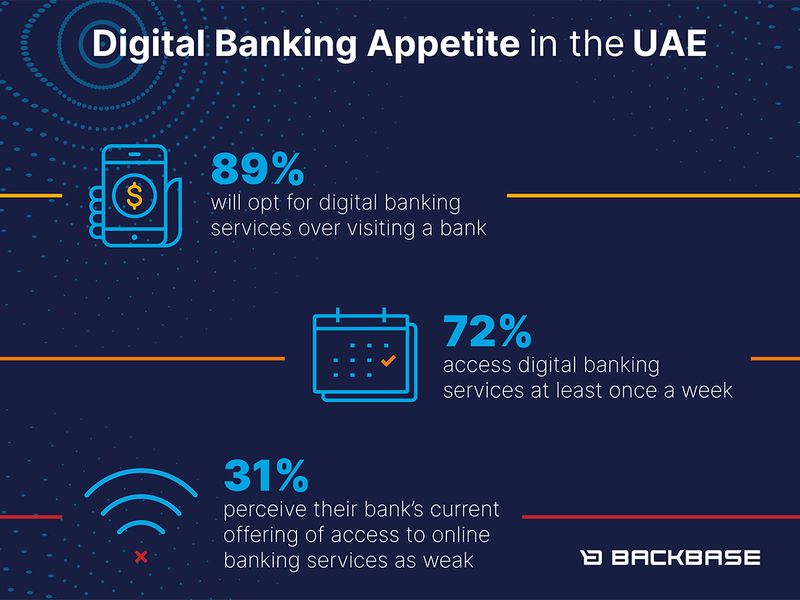
Over the last 18-months, digital banking has truly come to the fore. As the world grappled with the pandemic, industries turned to digital.
In the past, adoption had been relatively slow with some industries reluctant to adjust as there was little compelling business reason to do so. After all, if customers are used to a certain way of doing things, why change?
With a year of lockdowns and remote working now behind us, that perception has shifted. Not only have consumers become more comfortable with shopping online, businesses have put in place the infrastructure that enables them to fully exploit the potential of digitisation. This shift in mindset is reflected in the findings of a YouGov poll of 1,005 consumers in the UAE commissioned by Backbase.
A staggering 89 per cent of those questioned said they now prefer digital banking services, of which 72 per cent said they used digital banking services at least once a week. Almost a quarter responded by saying they used these services at least once a day.

These figures reveal a shift in the attitude of consumers towards the level of digitisation they have become accustomed to and expect from banks. In response, banks must implement well-thought out digitisation programmes that cater to this changing preference. Failure to do so is likely to impact on business, as 44 per cent of those questioned said they would be willing to switch to a different bank because of poor customer relations.
A piecemeal approach
With just over a third of respondents saying their bank is weak when it comes to offering seamless access to online banking services, it is an area banks need to take seriously. Consumers now expect their banking services to be up to the standard and convenience of e-commerce, entertainment and transportation solutions. We have identified two approaches that banks are taking on their digital transformation path.
Some financial institutions are taking a piecemeal approach by launching or upgrading standalone apps as well as self-contained systems, which has resulted in a fragmented ecosystem that fails to meet consumer expectations. This mindset must change. Small-scale and short-term thinking will not create a seamless customer journey.
An increasing number of banks are taking a broader approach with platform-based strategies that remove existing siloes across different geographies, channels or products. This year-on-year process requires a single underlying platform that will enable them to operate across regions and business sectors.
Cloud alone is not an answer
It is crucial that an efficient governance structure is in place to run a multi-country operation effectively. That is why it is more than just technology. Leadership must instil a truly digital culture throughout the entire organisation.
Digital transformation is not simply a case of adding Cloud-based solutions, but requires a shift in mindset by placing the digital at the core of everything they do. The challenge many banks face is the dependence on outdated legacy systems with too many siloed solutions such as call centres and ATM machines, in addition to mobile and online services.
Consumers expect frictionless service that is as accessible as those from streaming services such as Netflix, where one platform meets all their needs. For this to become a reality, banks must replace their outdated systems over time with a platform-based approach.
Organisations that succeed will be rewarded with seamless, and easy customer journeys that lead to more sales, increased conversion ratios and lower costs. This is easier said than done - but by plotting out a value map of all business lines such as retail, SMB and corporate as columns, and then processes such as onboarding, digital sales, share of wallet and customer servicing as horizontals they can get positive return on their digital investment.
Keep checking
Banks can also conduct a pain-point analysis to see where RoI can be made. For example, if a bank prioritised customer happiness, they could measure results by creating a net promoter score – a percentage of customers who are likely to recommend the bank or product or service to someone else. This score can then be tracked over time to show the tangible impact of digital transformation.
Operating intelligently will achieve faster RoI following digitisation and by achieving incremental and valuable milestones along the way. Banks that prioritise improving one or two key areas at a time, using small, focused teams are more successful.
As areas of friction are eased, a more productive feedback loop and positive momentum is gained which leads for further scaling up of processes in the future. In essence, banks that have a digital strategy that relies on a single platform and then sets out achievable goals will enjoy the benefits of digitisation.













